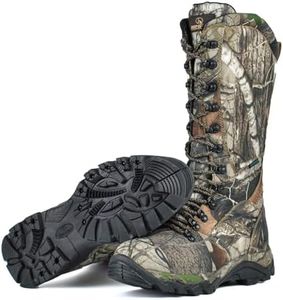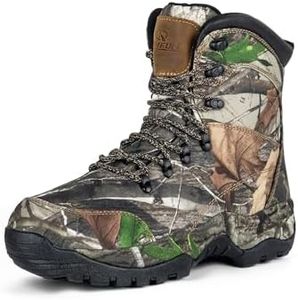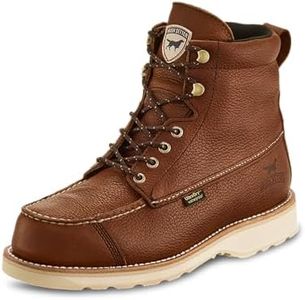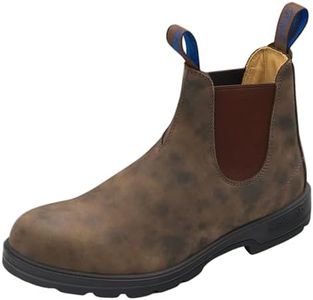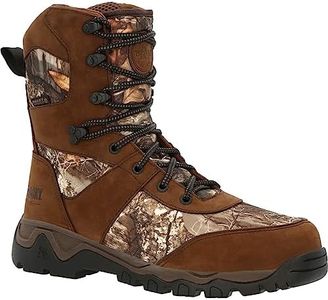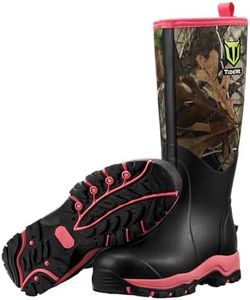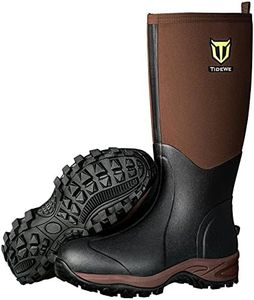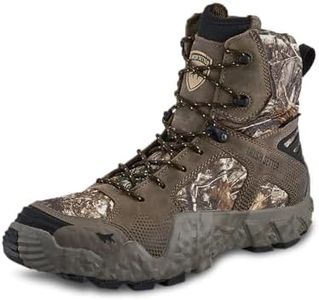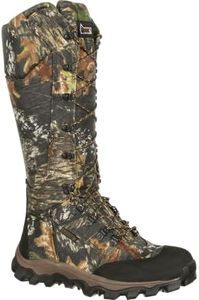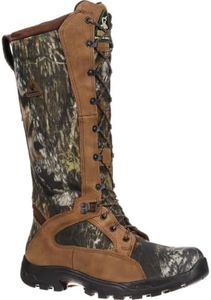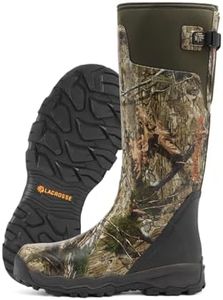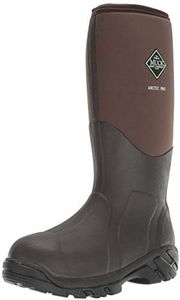We Use CookiesWe use cookies to enhance the security, performance,
functionality and for analytical and promotional activities. By continuing to browse this site you
are agreeing to our privacy policy
10 Best Waterproof Hunting Boots
From leading brands and best sellers available on the web.Buying Guide for the Best Waterproof Hunting Boots
Choosing the right waterproof hunting boots is important for your comfort, safety, and effectiveness outdoors. Think about where, when, and for how long you’ll be using the boots, as different terrains and weather conditions can put unique demands on your footwear. Good hunting boots protect your feet from water, rough surfaces, and cold, while also supporting you over long distances. Considering how you hunt, where you’ll be walking, and the climate can help you find the perfect pair.Waterproof MaterialWaterproof material keeps your feet dry and protected from rain, puddles, or wet vegetation. Common materials include treated leather, rubber, and synthetic membranes like Gore-Tex. Some materials are more breathable, allowing heat and sweat to escape, while others seal everything in for maximum waterproofing. If you hunt in mild climates with light rain, a breathable material may be enough. For swampy, snowy, or always-wet environments, look for fully waterproof membranes or rubber exteriors for the best results.
InsulationInsulation in hunting boots helps keep your feet warm in cold weather. Insulation levels are usually measured in grams, indicating how much insulating material is added. Lightweight insulation (200-400 grams) is suited for cool but not freezing conditions or when you’re moving a lot. Medium insulation (600-800 grams) is good for colder temperatures or periods of sitting still. Heavy insulation (1000 grams or more) is for extreme cold or long hours of inactivity. Consider your hunting season and how much you’ll be standing versus walking.
Height of BootBoot height refers to how far up your leg the boot goes, usually measured in inches from the sole. Shorter boots (6-8 inches) are lighter and cooler, ideal for early season or easy terrain. Mid-height boots (9-12 inches) offer a balance of support and protection from water, mud, or brush. Tall boots (13 inches or taller) provide maximum coverage for deep water, snow, or very rough environments. Match the height to the conditions: higher for tricky, wet, or thorny areas, lower for easier walks.
Traction and SoleThe sole impacts your grip and safety on different surfaces. Aggressive treads and deep lugs are good for muddy, rocky, or slippery ground, while flatter soles are better for quiet movement in dry forests or fields. If you hunt in difficult terrain, look for sturdy, rugged soles for extra traction. For flat, dry environments, simpler soles may suffice, making it easier to walk quietly and comfortably.
Fit and ComfortThe fit of a boot affects your comfort during long hunts. A good fit prevents blisters and fatigue, while a bad fit can ruin your trip. Try boots with the same socks you’ll wear while hunting, making sure there’s room for your toes and no pinching around the foot or ankle. Some boots break in over time while others fit best right away. Consider the shape of your foot, arch support, and any personal preferences for space or snugness.
WeightBoot weight matters because heavy boots can tire you out faster, but they often offer more protection and warmth. Lightweight boots are easier to walk in over long distances or varied terrain, and they work well if you’re covering a lot of ground. Heavier boots may be best if you need extra durability, insulation, or support, especially if you spend a lot of time in harsh conditions.
